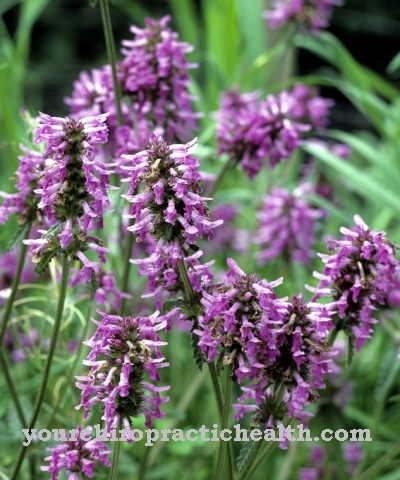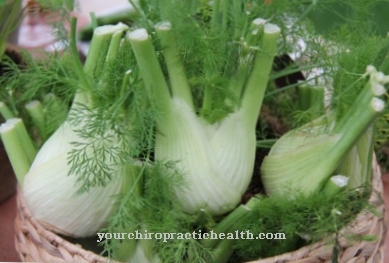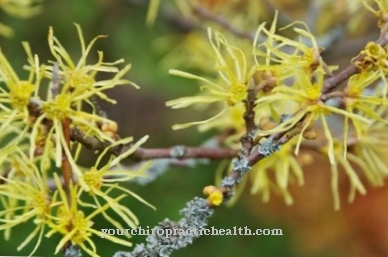The Centaury has been a highly valued medicinal plant since ancient times. Hippocrates already praised this stomach herb, which is still used today as a herbal medicine. However, its occurrence has become very rare, so that this plant is now under strict nature protection and may not be collected in Germany.
Occurrence & cultivation of centaury

The one to two year old plant can reach a height of 40 cm. A square stem develops from the taproot with a native leaf rosette and lanceolate, pointed leaves. From June to September, the light pink flowers of the cymes only open when the temperature is above 20 degrees Celsius. However, they close when it rains.
Centaury prefers loamy, lime-rich compacted soils on roadsides, meadows or forest clearings. But it can also be found on dry slopes, on boggy or sandy surfaces. Today the plant genus is native to around 20 species, especially in the Mediterranean region of Europe, as well as in Asia and Africa. In North America it is grown as a medicinal plant.
Effect & application
All plant parts of the flowering herb are used for medicinal purposes, with the exception of the root. Centaury belongs to the Amara group - a drug that contains bitter substances. With a bitter value of 1: 3500 (in a 3500-fold dilution a bitter taste would still be perceptible) it is only surpassed by the yellow gentian (1: 10000).In addition, flavonoids, xanthones, triterpenes and essential oils can be found in the plant as natural substances with antioxidant and anti-inflammatory effects.
However, the bitter substances are the elements that make the highest pharmacological efficiency. They trigger an increased secretion of saliva and digestive juices. The taste buds of the base of the tongue are activated and thus the vagus nerve is irritated. This 10th cranial nerve runs from the brain to the abdomen. There it stimulates the glandular cells of the stomach to release more hydrochloric acid and pepsinogens. The activity of the liver, bile and pancreas is encouraged.
When the bitter substances have reached the stomach, the hormone gastrin is also released. It also stimulates the production of digestive juices and the motor skills of the stomach. The resulting acidity provides optimal conditions for enzyme work. The nutrients are broken down and supplied to their areas of action. Overall, the bitter substances stimulate the appetite, digestion is generally accelerated and the absorption of nutrients is promoted.
Centaury as a herbal medicine should always be taken in the form of teas or tinctures in this area. Tablets, dragees or capsules, on the other hand, should be rejected because they cannot appeal to the taste buds. The herb is also used in bitters or medicinal wines. In addition to its pharmacological effect, the centaury has a variety of phytotherapeutic importance. It has an antioxidant and anti-inflammatory effect, regulates the circulation, lowers blood pressure and invigorates; it stimulates the entire metabolism.
Scientific research discovered another group of substances in the centaury that suggests a positive influence on cancer. The fabrics are so-called eustomine. They are substances that can protect against a tumor by inhibiting cancer-promoting activities. The findings regarding the effectiveness against cancer have not yet been conclusively confirmed.
Importance for health, treatment & prevention
The explanations about the mode of action show many areas on the health level in which the centaury can develop its healing activity preventively or acutely:
The standard approval exists as a herbal stomach and intestinal remedy. The main area of application is the digestive system. The stomach herb helps with bloating, heartburn and gas, as well as acute or chronic digestive problems and mild diabetes. But it also counteracts loss of appetite and is used to support anorexia and eating disorders.
Viral infections are treated successfully, fever can be lowered. (The plant is also under the name Feverweed known.) In addition, the plant is used against mild bladder problems. Centaury develops its invigorating effect after a long recovery period and severe states of exhaustion. It is also used to disinfect poorly healing wounds. This is where the antibacterial essential oils unfold their effectiveness.
For the digestive sector in particular, it can be presented as a tonic, bitters, medicinal wine or tea. You can get it ready-mixed in stores, but you can also make your own tea from a cold extract at home. For this, 1g = 1 teaspoon of the herb is used in 1 cup of cold water. The brewing time is 6-10 hours. A tablespoon is taken half an hour before the main meals so that the effects can develop.
Since the bitter substances are sensitive to heat, such a cold extract is the first choice. With a warm tea, the leaves should only be scalded. Both types of preparation should only be drunk unsweetened. Poultices are used for inflammation and rashes. A clean cloth is soaked in the cold extraction described above and placed on the wound. Alternatively, the coarsely crushed leaves can be used.
Tablets, dragees and capsules are especially used for bladder problems, as the digestive tract is not directly affected. Usually you get a combination preparation that brings together different medicinal plants. The Bach Flower Centaury is also used for ailments that are more likely to be caused by psychological instability. It is available ready-mixed at the pharmacy and should be put directly on the tongue with four drops several times a day.
Centaury has continuously expanded its areas of application as an effective medicinal plant to this day. The plant is used in a variety of ways in various forms of administration, although some areas have not yet been conclusively researched.




























